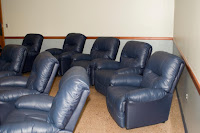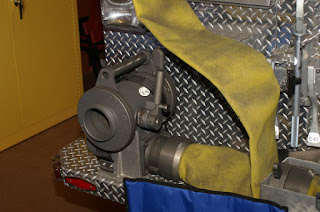The Humat valve is manufactured by Humat, Inc. which is located in Forest Hills Maryland. It was founded by Bob Hughes, Hurley Matthews, and Nick Borst to develop and market to the fire service products that improve water handling on the fire ground. How it got it's name I don't know.
The Humat 4-way Hydrant Valve, is used by innovating fire departments in every state and is relied on for training by leading fire schools. Using Humat valves is the most efficient method to get the most water on the fireground in the least amount of time. It is made of lightweight aluminum alloy for easy handling, heat treated for extra strength and hard coated to prevent corrosion and increase surface strength.
Here is an exploded view of one with storz connections.
 And here is an exploded view with standard connections.
And here is an exploded view with standard connections. See the difference.
See the difference.Here are some simple illustrations on how to use one:


 Here as the features that can be found on the valves.
Here as the features that can be found on the valves.* Maximum Capacity. Main valve chamber has an interior
diameter of 5 1/2". The smaller chamber has an interior
diameter of 4".
* Minimum Training. Proficiency is quickly acquired to
incorporating Humat Valves into your attach procedures. 1/4
turn of the handle for full operation.
* Simplicity of Design. Only one manual control for complete
operation. The handle position immediately indicates
whether the interior butterfly valve is open or closed.
* No Reverse Twist. Operation is equally efficient with
smaller chamber in up or down position depending on
location of fire.
* Flow Never Interrupted. Water flow is increased from
hydrant pressure to pump pressure automatically with no
interruption of flow when pump pressure is activated.
* Versatility. Flanged couplings are available with virtually any
nonstandard thread or waterway size, including Storz type
couplings.
So there you are!




































































